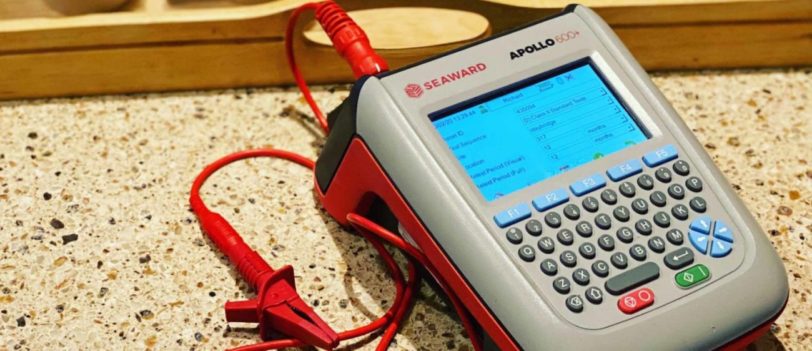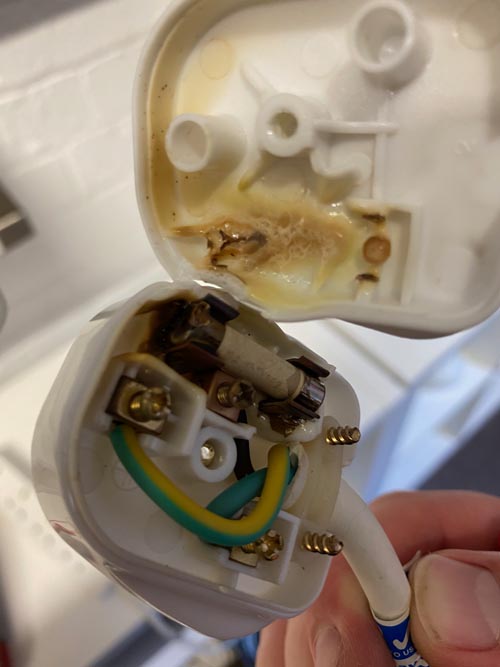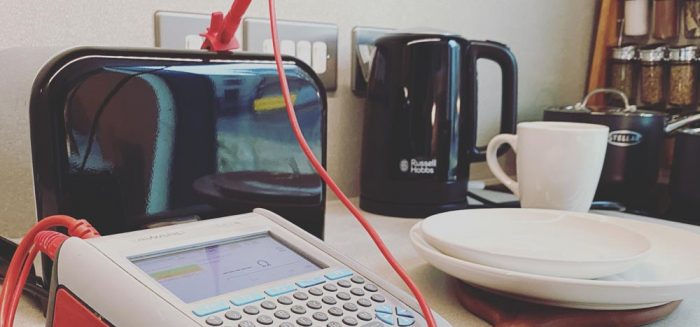
PAT Testing Made Easy: A Step-by-Step Guide to Ensuring Electrical Safety
Welcome to our comprehensive guide on PAT testing, the essential process for ensuring electrical safety in any environment. Whether you’re a business owner, facilities manager, or simply someone concerned about the safety of electrical appliances, this step-by-step guide will equip you with the knowledge and tools to confidently conduct PAT testing.
We understand that electrical safety is paramount, and that’s why we’ve designed this guide to be accessible, informative, and easy to follow. From understanding the basics of PAT testing to learning about the different types of electrical equipment, we’ll cover everything you need to know. With our expert tips and recommendations, you’ll be able to create a safe environment for everyone, while also complying with legal requirements. So, let’s dive in and make Portable Appliance Testing easy, so you can have peace of mind knowing that you’ve taken the necessary steps to protect yourself and others from electrical hazards.
Understanding Electrical Safety Regulations
Electrical safety regulations are in place to protect individuals from the risks of electrical accidents. These regulations outline the legal responsibilities of individuals and businesses to ensure the safety of electrical equipment. One of the key requirements is the need to conduct Portable Appliance Testing (PAT testing) to identify any potential electrical faults or hazards.
PAT testing helps to prevent accidents, reduce the risk of fire, and ensure compliance with safety regulations. By understanding these regulations, you can better appreciate the importance of appliance testing and the role it plays in maintaining electrical safety.
The Importance of PAT Testing
PAT testing is an essential process that helps to ensure the safety of electrical appliances. It involves a series of checks and tests to determine whether electrical equipment is safe to use. This includes visual inspections, earth continuity tests, insulation resistance tests, and more.
The importance of PAT testing cannot be overstated, as it helps to identify potential faults or defects that could lead to electrical shock, fires, or other accidents.
Regular PAT testing is crucial to maintaining the safety of electrical equipment and preventing potential hazards. It not only protects individuals from harm but also safeguards properties and reduces the risk of legal liability.
PAT Testing Equipment and Tools
To conduct a PAT test, you’ll need the right equipment and tools. The most common items include a portable appliance tester, test leads, a socket tester, and labels for marking equipment. Portable appliance testers come in different types, ranging from basic models to more advanced ones with additional features. Depending on your needs and budget, you can choose the right equipment that suits your requirements.
It’s important to ensure that your testing equipment is calibrated regularly to ensure accurate results.
Additionally, having the necessary tools and accessories will make the testing process more efficient and effective.

Step-by-Step Guide to Conducting a PAT Test
Conducting a PAT test involves several steps to ensure a thorough and accurate assessment of electrical equipment. Here’s a step-by-step guide to help you conduct a successful PAT test:
- Prepare: Before starting the test, ensure that the equipment is disconnected from the power supply and turned off. Inspect the equipment for any visible signs of damage or wear.
- Inspect: Begin by visually inspecting the equipment, checking for any loose connections, exposed wires, or signs of damage. Pay attention to the condition of the plug, cable, and any accessories.
- Earth Continuity Test: This test checks the integrity of the earth connection. Use a portable appliance tester to measure the resistance between the earth pin of the plug and the exposed metal parts of the equipment.
- Insulation Resistance Test: This test measures the resistance of the insulation between the live parts and the earth. It helps to identify any insulation breakdown or leakage current. Connect the tester to the equipment and follow the manufacturer’s instructions to perform the test.
- Functional Test: This test ensures that the equipment is functioning as intended. Turn on the equipment and check its various functions and features. Ensure that all switches, buttons, and controls are working correctly.
- Results: Record the test results, including the equipment details, test outcomes, and any notes or observations. Use labels to mark the equipment as tested and include the test date and the name of the tester.
By following these steps and conducting regular PAT tests, you can identify any potential faults or hazards and take appropriate action to ensure electrical safety.
Common PAT Testing Mistakes to Avoid
While PAT testing is a straightforward process, there are some common mistakes that individuals make. By being aware of these mistakes, you can avoid them and ensure accurate and effective testing. Here are some common PAT testing mistakes to avoid:
- Incomplete Testing: Skipping certain tests or rushing through the process can lead to inaccurate results and missed hazards. Ensure that you follow all the necessary steps and conduct each test thoroughly.
- Lack of Training: Conducting PAT tests without proper training and knowledge can result in incorrect interpretations of test results. It’s important to receive adequate training or hire a qualified professional to perform the tests.
- Ignoring Test Intervals: PAT testing should be done regularly, based on the type of equipment and its usage. Ignoring recommended test intervals can increase the risk of accidents or equipment failure.
- Not Keeping Records: Proper record-keeping is essential for compliance and traceability. Failing to keep accurate records of test results and equipment maintenance can lead to legal issues and safety concerns.
By avoiding these common mistakes, you can ensure that your PAT testing is thorough, accurate, and effective in maintaining electrical safety.
Tips for Maintaining Electrical Safety in the Workplace
In addition to conducting regular PAT testing, there are several other steps you can take to maintain electrical safety in the workplace. Here are some tips to consider:
- Regular Inspections: Conduct regular visual inspections of electrical equipment to identify any signs of damage, wear, or potential hazards. Promptly address any issues that are discovered.
- Proper Use and Handling: Train employees on the proper use and handling of electrical equipment. Encourage safe practices, such as unplugging equipment when not in use and avoiding overloading sockets.
- Good Housekeeping: Keep work areas clean and free from clutter, as this can help prevent accidents and reduce the risk of electrical hazards.
- Electrical Maintenance: Schedule regular maintenance and servicing of electrical equipment to ensure their safe and efficient operation. This includes checking for loose connections, testing circuits, and replacing faulty components.
- Employee Education: Educate employees about electrical safety, including the potential hazards and how to respond in case of an emergency. Provide clear guidelines and procedures for reporting any issues or concerns.
By implementing these tips and creating a culture of electrical safety in the workplace, you can minimize the risk of accidents and create a safe environment for everyone.
Hiring a Professional PAT Testing Service
While conducting PAT tests in-house is possible, hiring a professional PAT testing service offers several advantages.
- Professional testers have the necessary knowledge, experience, and equipment to perform thorough and accurate tests.
- They can identify potential hazards that may go unnoticed and provide comprehensive reports on the safety of your electrical equipment.
- Additionally, outsourcing PAT testing allows you to focus on your core business activities while ensuring compliance with electrical safety regulations.
PAT Testing Certification and Legal Requirements
After conducting PAT tests, it’s important to have proper documentation and certification to demonstrate compliance with legal requirements. This includes maintaining records of test results, equipment maintenance, and any repairs or replacements. Certification provides evidence that you have taken the necessary steps to ensure electrical safety and can be requested during inspections or audits. It also helps to build trust with customers, employees, and other stakeholders, showcasing your commitment to maintaining a safe environment.
Conclusion: Taking the Necessary Steps for Electrical Safety
In conclusion, PAT testing is a crucial process for ensuring electrical safety in any environment. By understanding the basics of PAT testing, acquiring the right equipment, and following a step-by-step guide, you can confidently conduct thorough tests and identify potential hazards. Avoiding common mistakes, maintaining electrical safety in the workplace, and considering professional PAT testing services further enhance the effectiveness of your safety measures.
Remember to keep accurate records, obtain certification, and stay up-to-date with legal requirements. By taking these necessary steps, you can create a safe environment for everyone and minimize the risks of electrical accidents or hazards.
Start implementing the knowledge from this guide today and make PAT testing easy while prioritizing electrical safety.
Everything mentioned here is what we do, so get in touch today to arrange for your PAT testing to be carried out by a professional company recommended by these people.


